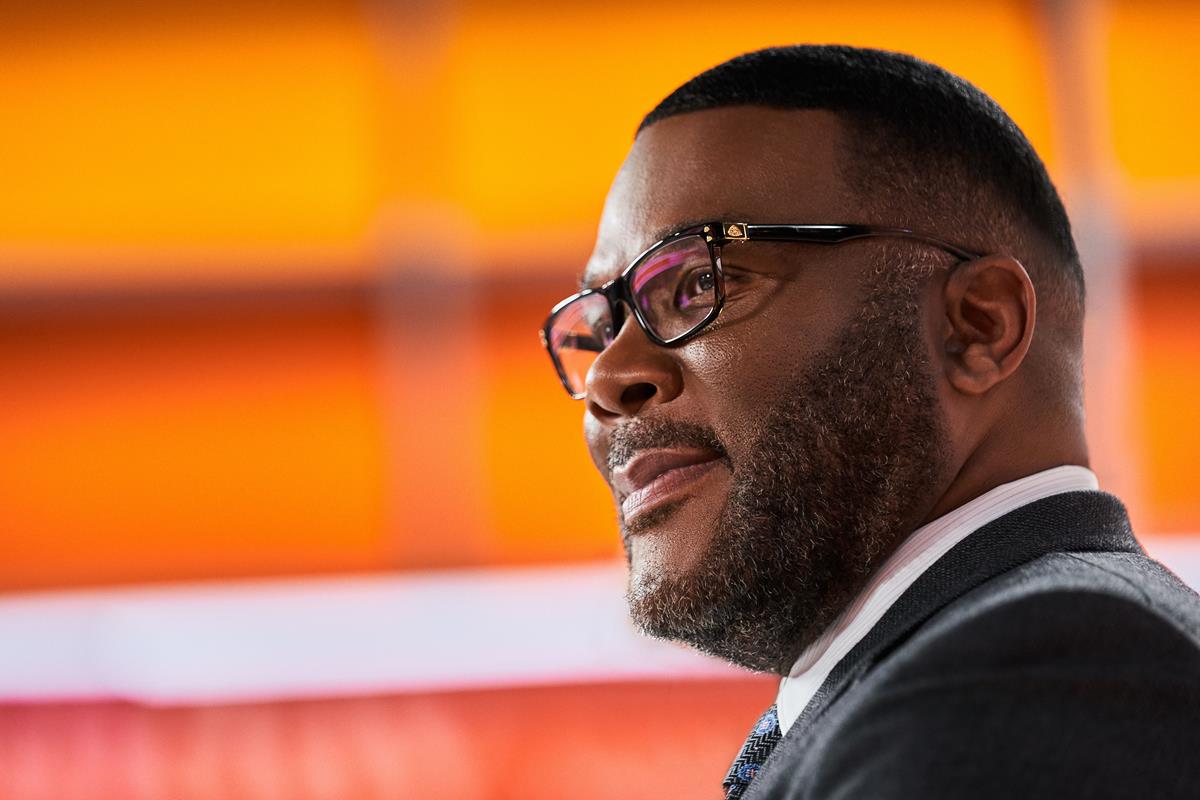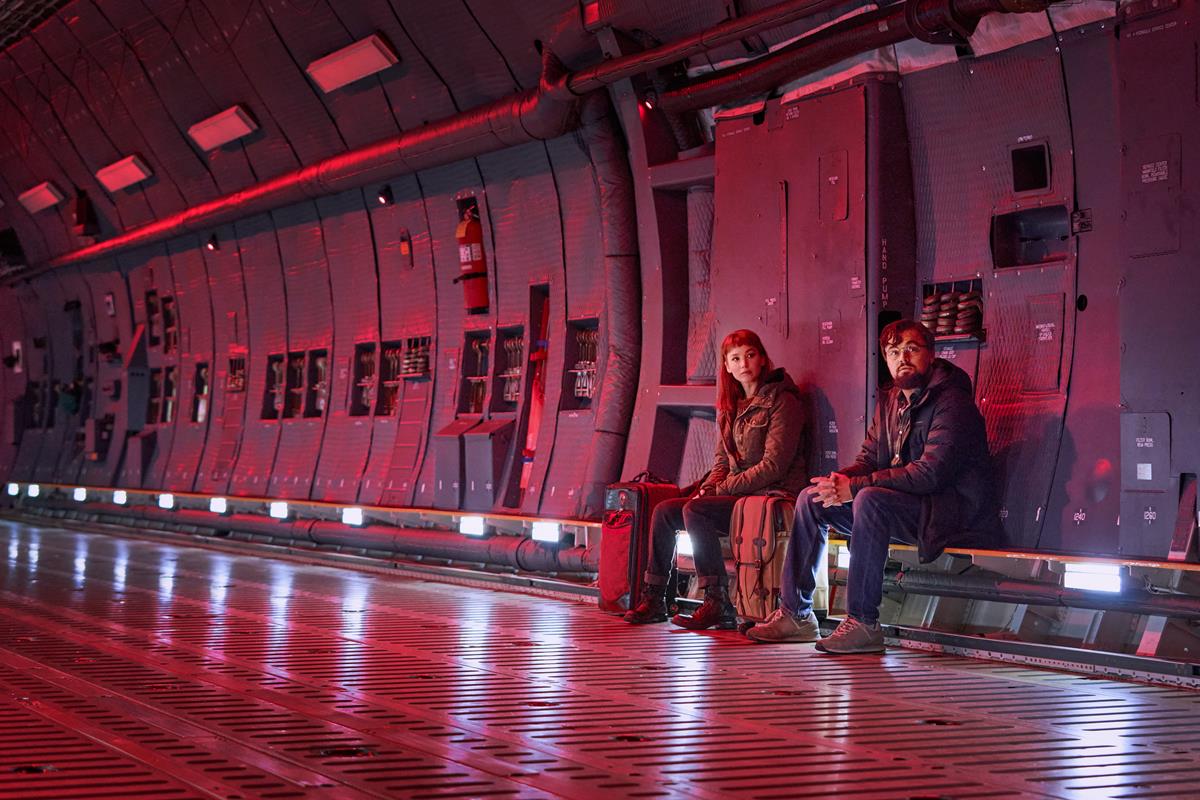
Netflix comedy drama Don’t Look Up got people talking, not just about the thing the filmmakers intended — climate change — but about whether it was any good.
Last November, heads of state meeting to dither, delay and deny environmental catastrophe at COP26, climate concerns dominated headlines for a few days. Most governments made moderate pledges (The Marshall Islands’ envoy and Tonga’s rep were notable exceptions) or blamed others’ inaction.
In contrast, the the art world’s take on the climate crisis has often been mixed. Writers and directors have sometimes over-exaggerated our impending doom to the point of silliness (think Deepwater Horizon, or the more recent Greenland starring Gerald Butler). But some filmmakers have treated sea level rise and year-round wildfire season as a threat level that reaches us as just meh.
But in this case, most critics agree that Don’t Look Up lands somewhere between those camps.
The movie, which is both an allegory (it’s not climate change, it’s an asteroid!) and a political satire drawn directly from the headlines, has been widely criticized for its “wake-up-sheeple howl,” in the words of Rolling Stone’s David Fear.
READ MORE: ‘Don’t Look Up’…or You Might See One Bomb of a Movie Hurtling Right Toward You (Rolling Stone)
But something about the movie also resonated for those already awakened to the dangers of a world that feels beset with challenges and a bureaucracy unwilling or unable to face it square on.
What Worked, What Didn’t and for Whom
Reviews may have largely panned Adam McKay’s latest film, but that doesn’t mean that audiences have had the same reaction.
We are no longer in an era when Roger Ebert’s sign of approval was a prerequisite for spending $10 on a movie ticket (not to mention we are no longer required to put on hard pants and phone a date to gauge interest in this particular movie).
The direct-to-streaming model has enabled those of us with say, a less refined filmic palate, to delight in campy content headlined by recognizable names without fear of judgment. It may not be objectively good (although that’s disputable), but it is certainly popular.
Don’t Look Up cemented itself as the second-most-watched Netflix original movie of all time, with 2 billion watches as of late January, per Deadline. Some may have tuned in for the satire, while others anticipated a star-studded action flick (Tyler Perry and Timothy Chalamet in the same movie?!) — but whichever marketing tact resonated, people have watched/hate watched it.
Perhaps politics is key to understanding reactions to Don’t Look Up. Are critics and viewers betraying their own biases as they react to a movie that is intentionally steeped in a world informed by recent culture wars?
When the World Is Weird, Do Movies Get Weirder?
McKay himself says he was inspired by the 2019 book by David Wallace-Wells called The Uninhabitable Earth that depicts the ways which will wreak havoc on the planet if nothing is done to combat the climate crisis.
Explains McKay, “It all boiled down to this idea I just couldn’t shake: We all know how to react when there is a killer with an axe, or when your house is on fire, but what [he] was writing about was a million times worse. How do we get people to realize this is a clear and present danger? How close does that danger have to be for us to have the proper response? I felt like I needed to write this script.”
In these strange times, McKay ultimately chose a comedy as the vehicle to get this message across, referring to sitcoms like Office Space and Idiocracy, as well as Dr. Strangelove, Network, and Wag the Dog.
“I played with the idea at first of making a straightforward drama or a small, intimate character study, but at a certain point I knew I needed to make a comedy, because I felt like after these last few years, we really, really needed to laugh.”
Perhaps that choice in itself is a response to the somber tone of other recent “cli-fi” movies. Cummins picks out Downsizing (2015), Mother! (2017), First Reformed (2017) and Woman at War (2018) as all showing characters living in our dying world of the present or near future not some 50 or 500 years hence.

To which I’d add George Clooney’s slow but impactful (and ultimately hopeful) The Midnight Sky.
“Characters and audiences are alternately despairing, angry, and hopeful about our future,” says Cummins. “Perhaps that’s why many of the climate change movies of our time have forgone the action and adventure of postapocalyptic worlds and refocused on the psychological and spiritual experience of impending doom.”
READ MORE: Don’t Look Up Was Good for Climate Cinema, Even If You Hated It (The New Republic)
In her essay at The New Republic, Eleanor Cummins quotes climate futurist Alex Steffen, who says that we now live in a world that is “trans-apocalyptic.” Cummins adds that our lives are increasingly defined by constant engagement with ecological realities like floods and fires.
“The more TV shows, books, and movies depicting climate change — and the more variety of climate consequences depicted — the better,” she argues.
Yet, as novelist Amitav Ghosh wrote in The Great Derangement in 2016, “the climate crisis is also a crisis of culture and thus of the imagination.”
A Short Filmography of Climate Change Activism
Cummins charts cinema’s recent response. Nineteen-eighties cinema was largely free of depictions of environmental crisis, “and when global warming returned with a vengeance in 1995’s Waterworld, its critique of the oil industry barely registered.”
A decade later, The Day After Tomorrow (2004) begins at a United Nations-style climate summit, where paleoclimatologist Jack Hall (Dennis Quaid) warns world leaders that global warming will paradoxically trigger another Ice Age.
Despite criticisms of its heavy-handed script and dubious “science,” The Day After Tomorrow was a commercial success, while simultaneously “presenting global warming in a laughably unrealistic way,” as one critic wrote.
“The film itself doesn’t seem to have dramatically altered individual viewers’ attitudes on climate change,” says Cummins.
Is the Disaster Movie Model Right for Climate Cinema?
The duality of McKay’s intent to convey realism whilst giving it all a star-studded disaster movie sheen is evident in comments from his key crew. But is it effective?
Hank Corwin, the editor of Don’t Look Up, does say that working on the film “was much more of a spiritual approach.” He spent months “looking at everything from eagles to hippopotami” and drew on music and artwork, most notably from pointillism and surrealism to punctuate the film with a variety of stock images, freeze frame shots, and mixed visual media.
“What I found was by putting in little moments of nature, you were able to have moments that showed it’s not really humor so much as folly, which is well disguised as comedy. When you show birds flying, when you show an ocean, it grounds it into reality.”
Director of photography Linus Sandgren referenced more straightforward thrillers and action-packed films, including Armageddon and Independence Day in his approach. “From my point of view, it felt important to not emphasize the humor with the cinematography, but rather try to keep it serious and have the cinematography live in the thriller world as much as possible because the comedy sort of comes up naturally anyway.”

Dr. Amy Mainzer served as science advisor for the filmmakers and cast of Don’t Look Up. In the production notes, she said that the chances of an asteroid hitting the earth are “incredibly unlikely.”
“Now, when it comes to climate change, that’s something that is really, really, really likely to be happening. We have excellent evidence. And the consequences are really bad. So that means it’s an urgent, high-risk thing and we really need to be putting everything we can into that problem.”
How should artists be addressing this? Cummings seems to call for it to be embedded as a reality in every genre of television and film.
“Where is the marriage plot set in a carbon-regulating city that successfully retreated from the fire lines, or the gangster film about organized crime in renewable energy? The sitcom about a family whose full house is on stilts above the waterline, or the Wall Street movie about emissions pricing?”
Landing just round the corner, on February 4, is Lionsgate’s cli-fi Moonfall, starring Halle Berry and directed by Roland Emmerich, who also directed of The Day After Tomorrow and 2012. In Moonfall, a mysterious force knocks the Moon from its orbit into a collision course with Earth, triggering an environmental Armageddon.

Video Production’s Carbon Footprint and the Way Forward
A new report estimates that every hour of TV production generates 9.2 tons of CO2 and each ton of CO2 results in the loss of 3m2 of sea ice. Multiply that by hundreds of thousands of hours of TV production every year worldwide. Add in the explosion in video streaming, and the power required to support it, and it’s clear that the industry has a substantial and growing climate impact.
















